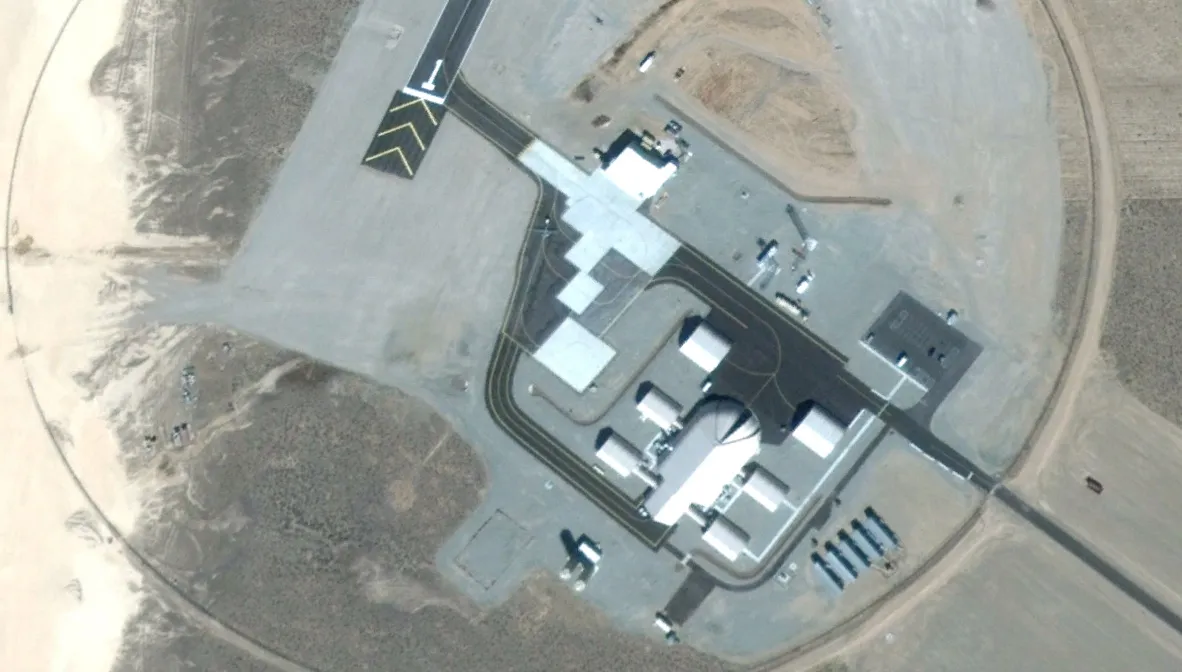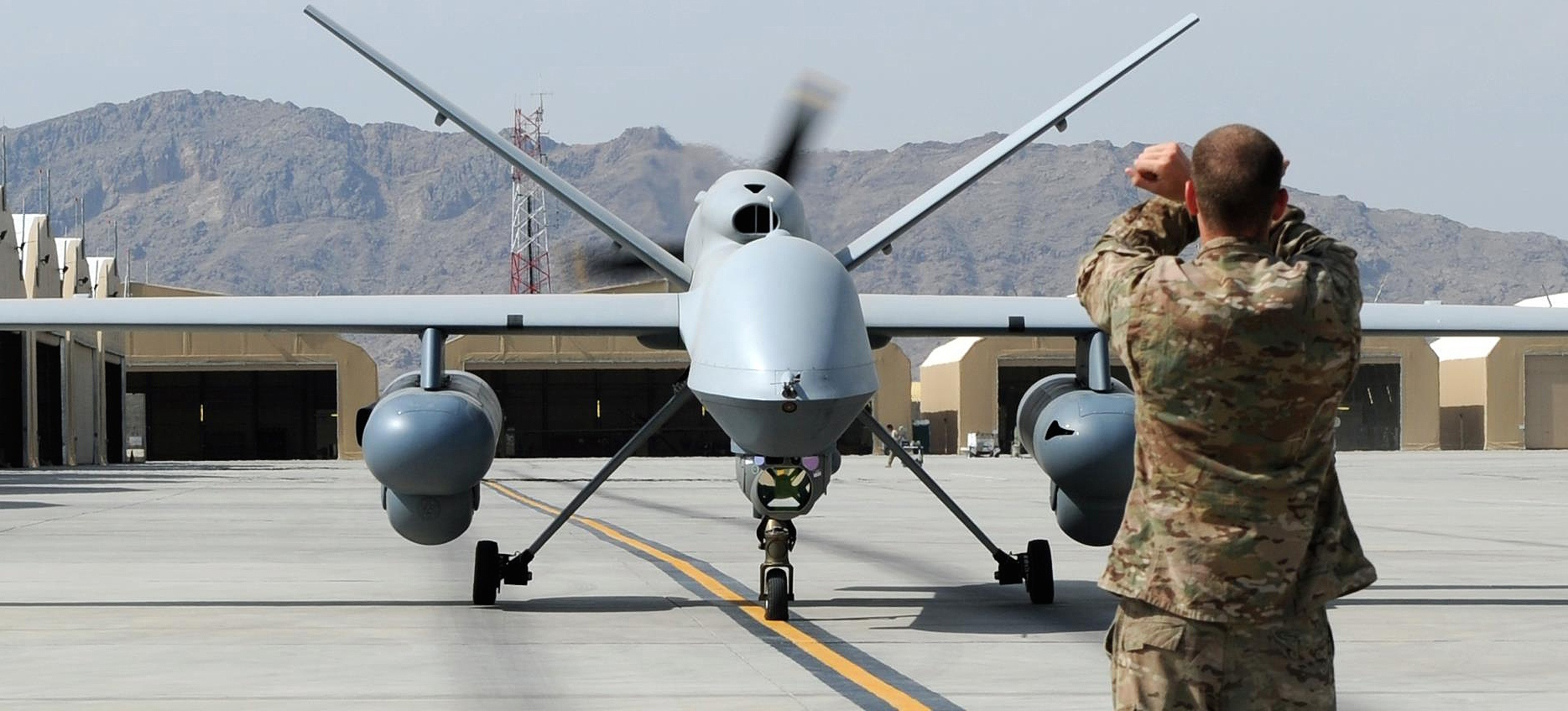The small and secretive airbase that sits on the southeastern edge of Yucca Dry Lake, deep inside the Nevada Test and Training Range’s (NTTR) Area Six has drawn a lot of interest over the better part of a decade. For those who keep tabs on the physical developments out at Area 51 and across the sprawling NTTR, the installation has become a regular location to pull up on satellite imagery providers like Google Earth. So far, photos of this shadowy facility have been limited entirely to those taken from space. That is until now.
The photo in question came to my attention via the fantastic Dreamlandresort.com website—a must-read, long-running, and very down-to-earth trove of information about Area 51 and its surroundings for those who are just venturing into the intriguing subject. Forum user “Gabriel” came upon the picture and linked it for others to see. Its origin is anything but secret. The company who installs many of the so-called “tension-membrane” clamshell hangars and structures that dot military bases across the U.S. and beyond had posted it prominently on their website, among photos of other projects. It is unclear how long the picture had been on the company’s site, but it just took the right person with a familiarity of the base’s unique layout to point it out.
From what we have been able to gather over the years, the base is used as a test site for modifications, sensor development, and unique payload integration work aboard medium-sized drones like the MQ-9 Reaper, and possibly smaller ones, as well. Reapers have been seen fairly routinely in satellite imagery. There are other far less remote sites that deal with similar tasks, but this installation, buried deep within the restricted airspace and terrain of the NTTR, provides a place to flight test more exotic and classified modifications, sensor systems, and payloads away from prying eyes.


Roughly six to a dozen aircraft are thought to be based there, along with a light manned aircraft that provides chase duties for test flights. The facility, which sports a 5,000-foot long by 75-foot wide runway, doesn’t serve a single military branch, it provides support across the DoD, federal agencies, and for the CIA’s expansive drone fleet. Lockheed Martin, in particular, seems to have a deep connection to the site, which was drastically expanded from a fenced-off helicopter pad and hangar into what it is today beginning in late 2004. In other words, it was born during the height of the Global War On Terror and the ballooning of the U.S. government’s drone fleet.

The old airstrip on nearby Yucca Dry Lake seems to be largely disused today. This is probably at least due in part to the newer and far more pristine strip being installed so nearby. The last known project to use Yucca Airstrip on the dry lakebed was Lockheed Skunk Works’ P-175 Polecat flying wing drone, which flew around the same time as when the new facility was being constructed.

Building contractors putting photos of their work done at military sites, even somewhat sensitive ones, before they become operational is not all that uncommon, but doing so with a base that is this secretive is somewhat unique. Although the photo doesn’t show us anything revolutionary, it does give us a far better sense of place and scale of the little airbase and its infrastructure, which is dominated by a clamshell hangar that has four smaller buildings of a similar design connected to it.
Those are likely workshop and administrative spaces to support various programs. One or some of them could also be used to support maintenance of the aircraft stored inside the main bay. Also prominently shown are the two large open-air shelters that can house multiple drones before and after flight operations.

Although we can’t say for certain what has been developed there in the past or what is being developed there now, there are certainly exotic capabilities that have emerged for this specific class of drones. These include everything from all-seeing and downright revolutionary wide-area aerial surveillance (WAAS) systems to Hellfire missiles that deploy sword-like blades to slide a particular target to death without killing many others in the process.

Today, directed energy payloads are being eyed to revolutionize what a drone like the MQ-9 can do. New micro-munitions will also give even smaller drones the ability to strike targets with pinpoint precision and give larger ones far deeper magazine depth. There are also indications that a number of even more sci-fi-like and shadowy capabilities equip some of America’s drones, you can read about that here. So, yeah, this base is likely quite significant and focused on bringing ‘bleeding-edge’ capabilities to certain facets of America’s drone forces, the heart of which is based just 25 miles to the south at Creech AFB.
Regardless, we now have our closest look at this quaint little research and development outpost located in the heart of where the federal government goes to hide.
Contact the author: Tyler@thedrive.com
